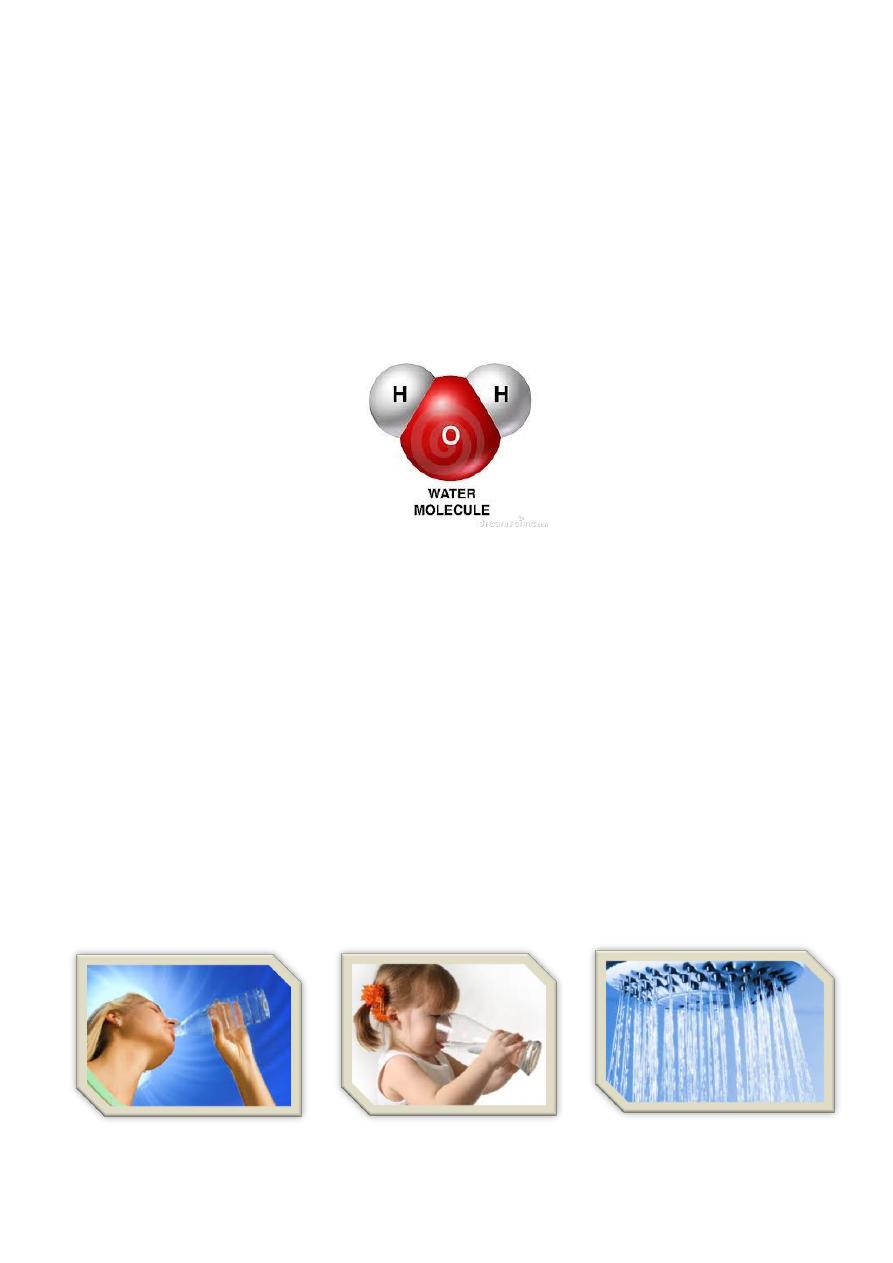
1
Community Dr.Mohammed Jasim
Water
A clear, colorless, odorless, and tasteless liquid, chemically H2O, essential for most plant and
animal life and the most widely used of all solvents. Freezing point 0°C (32°F); boiling point
100°C (212°F); specific gravity (4°C) 1.0000; weight per gallon (15°C) (3.782 kilograms).
CRITERIA OF POTABLE WATER(WHO)
The water is said to be potable when it devoid of pathogenic agents, harmful chemical
substances, and free from color, odor and usable for domestic purposes.
pH: , temperature :5-10 c
Water Cycle:
Approximately 97 percent of water being the salty sea water and 2 percent is frozen in polar ice
caps.
Thus only 1 percent of the world’s water is usable to human being and that as precious as life
itself as lack of water (dehydration) kills as faster than lack of food (starvation)
- Each need for domestic purpose per capita 150-200l per day .
- Daily drinking water requirement 2-3 l per day .

2
Sources of Water:
1. Rainwater(the main source of water in nature)
2. Surface water
p
Ponds and tanks
o Natural lakes and impounded reservoirs
o Rivers and streams
3. Groundwater
Wells: Shallow, deep, artesian
Springs: Shallow, deep, intermittent or seasonal.
It may be mentioned that sea water can also be used as a source of drinking water after
desalination
The WHO has recommended the following criteria of safety for large water
supplies:
1. No sample should have E.coli in 100 ml(most important indicator ).
2. No sample should have more than 3 coliforms per 100 ml.
3. Not more than 5 %samples throughout the year. should have coliforms in 100 ml.
4.No two successive samples should have coliform organisms in 100 ml.
The above standards may have to be relaxed in case of small water supplies from wells
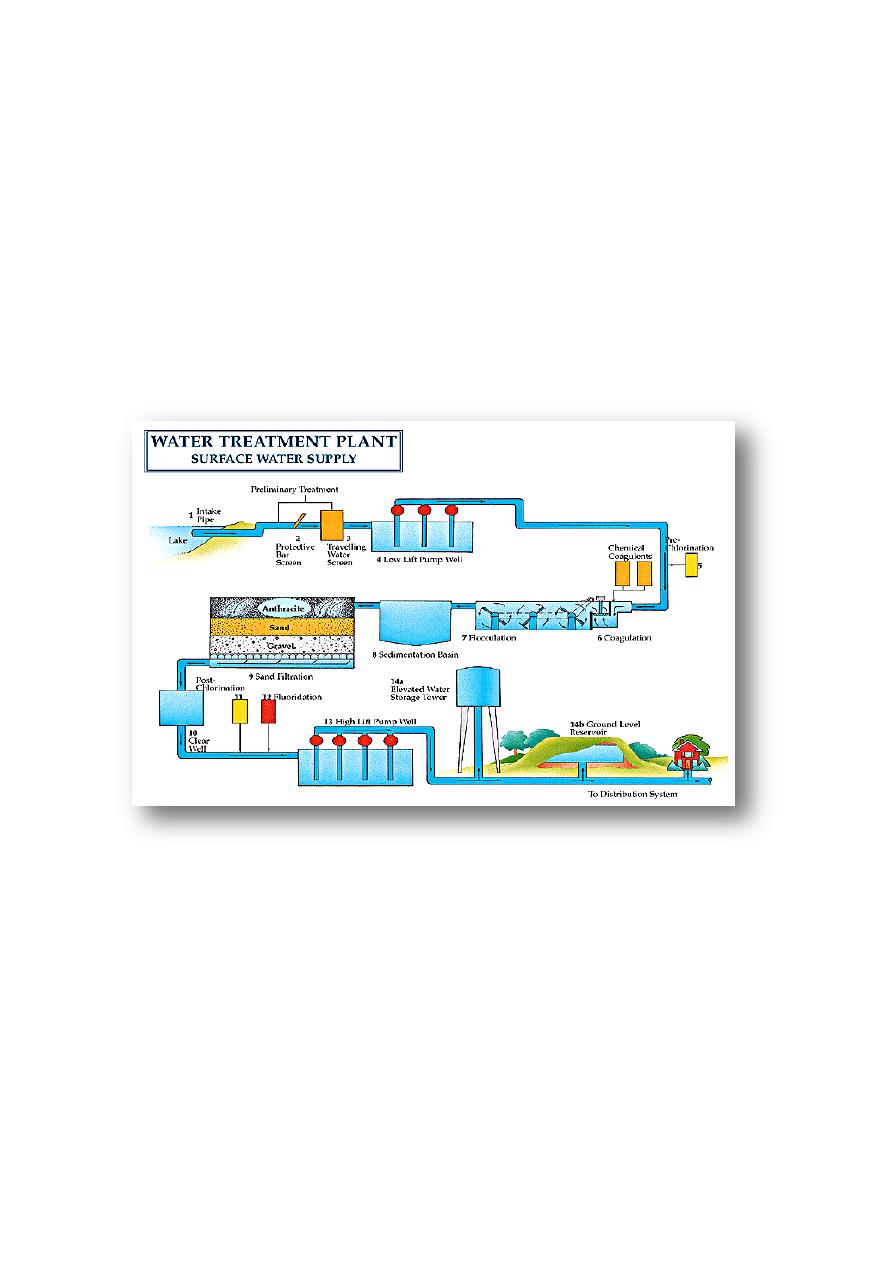
3
1. Purification of water (potable ):
A . Purification on Large Scale
This is carried out in the following stages:
* Storage
* Filtration
* Disinfection.
B. Purification on Small Scale
A
BOILING
A
Chemicals
2. Purification of salty water :
Distlation
STORAGE:
This is an important step in purification. Up to 90% percent of suspended matter settles down
within 24 hours of storage. This allows penetration of more sunlight which has its own sterilizing
effect.
FILTRATION:
There are two types of filters.
1. Slow sand filter, biological filter or English filter.
2. Rapid sand filter, mechanical filter or American filter.
which is again of two types: (a) Paterson filter (Gravity filter). (b) Candy filter (Pressure filter).
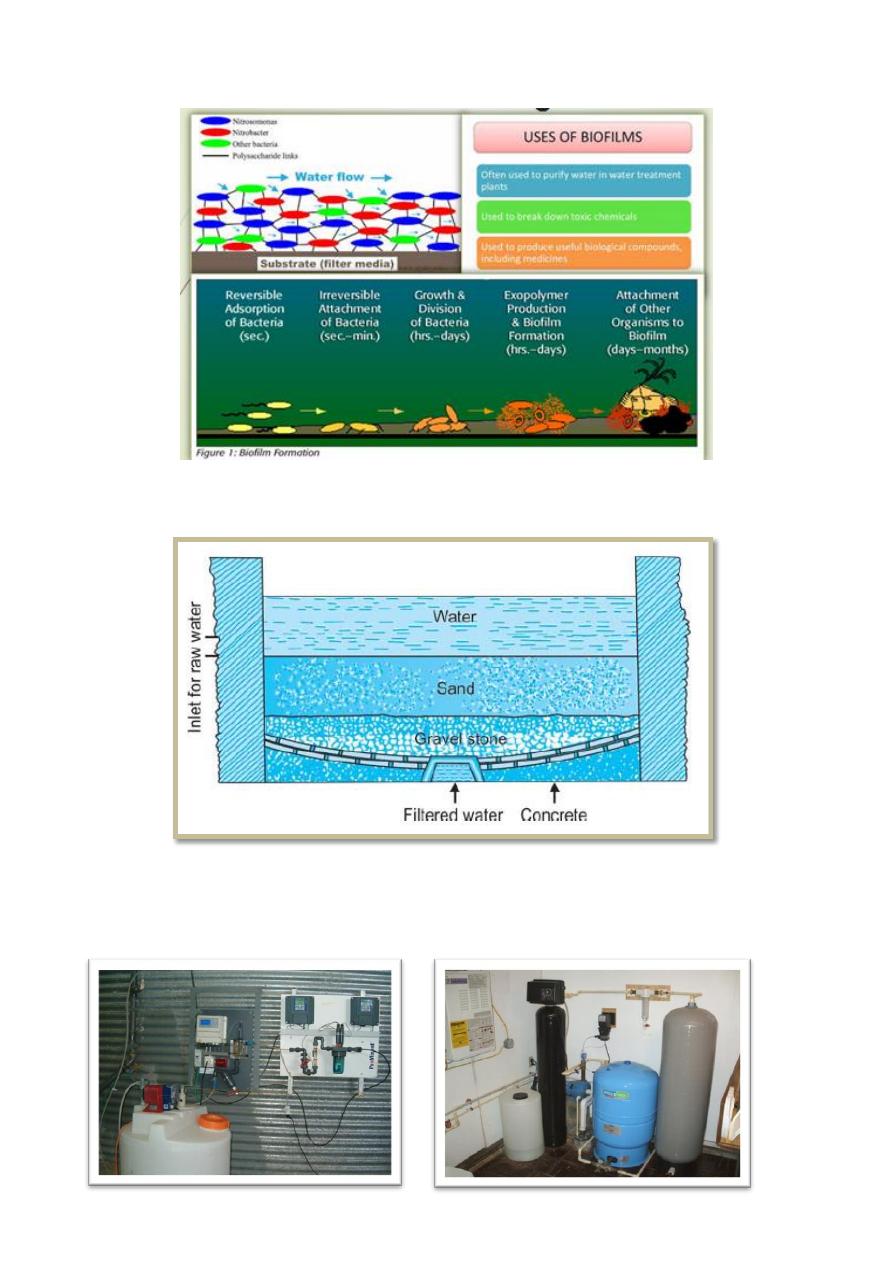
4
Slow sand filter, biological filter :
Slow sand filter:
CHLORINATION:
Chlorination is the method of choice for sterilization of water on a large scale.
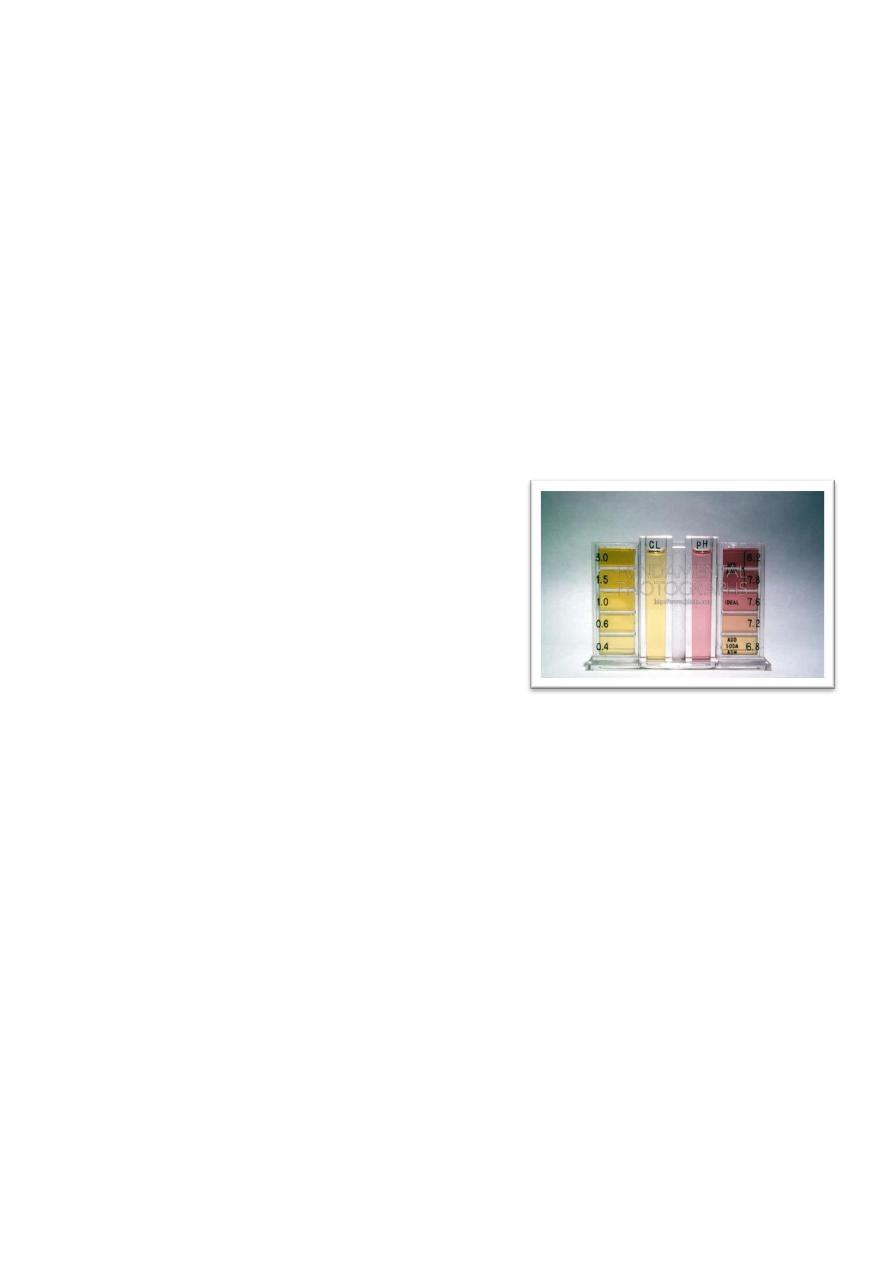
5
m It combines with chemicals like iron, magnesium and H2S, etc. to form chlorides.
m It forms hypochlorous acid (HOCl) which is responsible for the disinfectant action
m prevent growth of algae and fungi in tanks and reduce colors and odors
m Free or residual chlorine remaining in water acts as a powerful germicide (at least 1ppm)
after break point (after 1 hour) pH:7.0 .
It should be ensured for proper chlorination that 0.5 mg chlorine per liter of water is present
after 1 hour contact in residual chlorine
Disinfection :
ALTERNATIVES TO CHLORINATION
Ozone
Ultraviolet Light
TESTS OF FREE CHLORINE:
Ortho-toulidine test( OT ): In this test, 10 ml of
chlorinated sample of water is taken after the
required contact period, in a glass tube. To this 0.1
ml of orthotolidine solution is added. The color
formed is observed after 5 minutes. The formation
of yellow color normally indicates the presence of
chlorine (either combined or free) in the water.
The more yellow the color, the greater, is the
chlorine residual..
Diethly-p-Phenylene-Diamine (DPD) Test
Ó
This test is widely used nowadays.
Ó
The comparator is provided with a special dulling screen with a disc which must be fitted to
the right hand viewing window of comparator. The comparator discs will be available in two
different chlorine concentration ranges;
Ó
0.1 to 1.0 mg/L of chlorine and 0.2 to 4.0 mg/L of chlorine.
Ó
In order to carry out the test, 10 mL of water sample is taken in a tube, and it is placed in the
left compartment of the comparator. A reagent tablet (DPD chlorine tablets) is placed in
another tube to which 1 cm depth of water is added and the tablet is allowed to dissolve.
More water is now added to this until the tube contains 10 mL.
Ó
Now the comparator disc is rotated till the colors match(pink). The residual chlorine amount
can be directly read from the window in the lower right corner of the instrument.
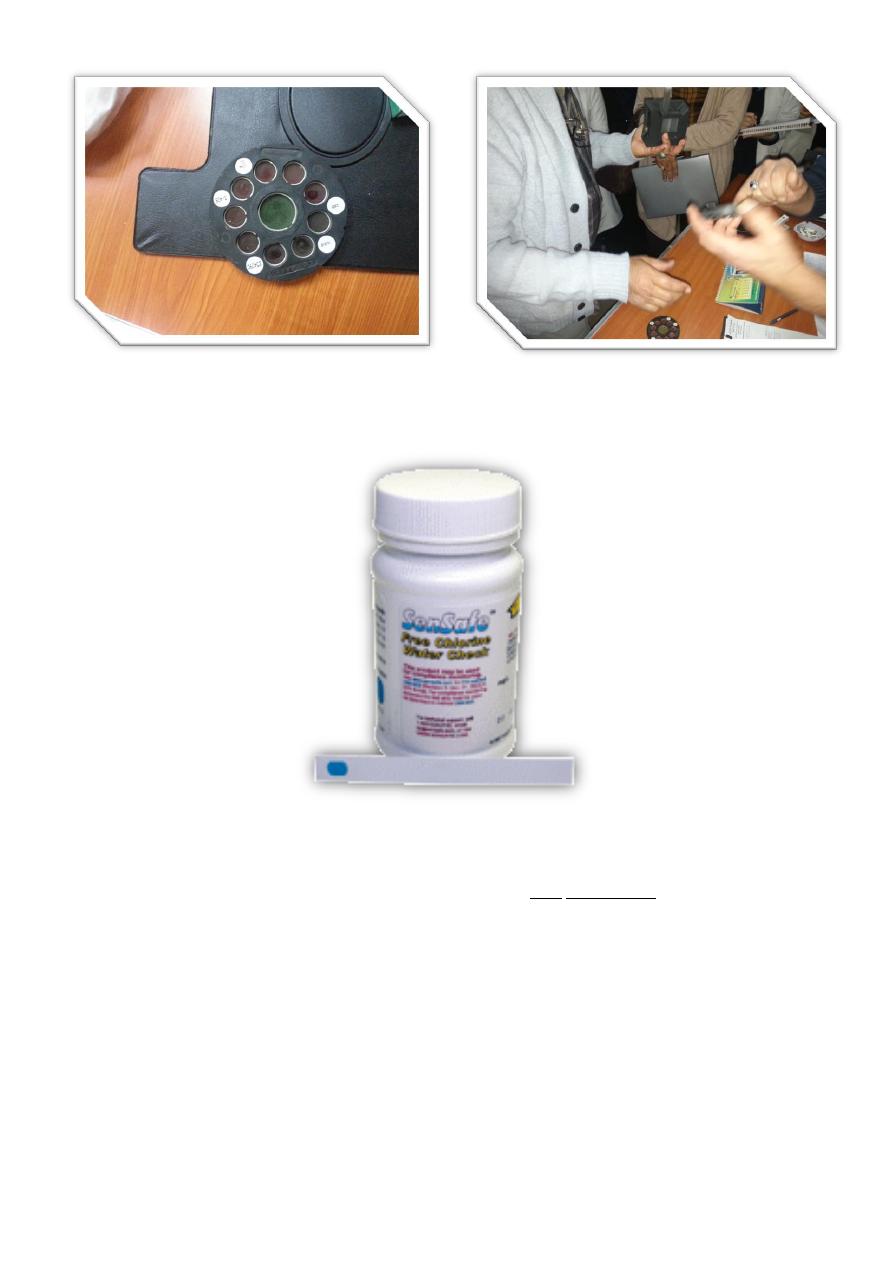
6
Starch iodide test: It is carried out to detect residual or free chlorine in tap water(If free chlorine
is present in water,( blue color appears)
Purification on Small Scale (Domestic Level):
BOILING: This is a simple and effective method. Boiling for 5 to 10 minutes kills most organisms.
It also removes temporary hardness.
Boiled water is insipid in taste. The taste can be regained by shaking it vigorously for some time,
so that the gases get dissolved in it.
DISTILLATION:
It is very costly but safe. In Kuwait, and Dubai sea water is distilled on a large scale because oil is
available cheap for use as fuel.
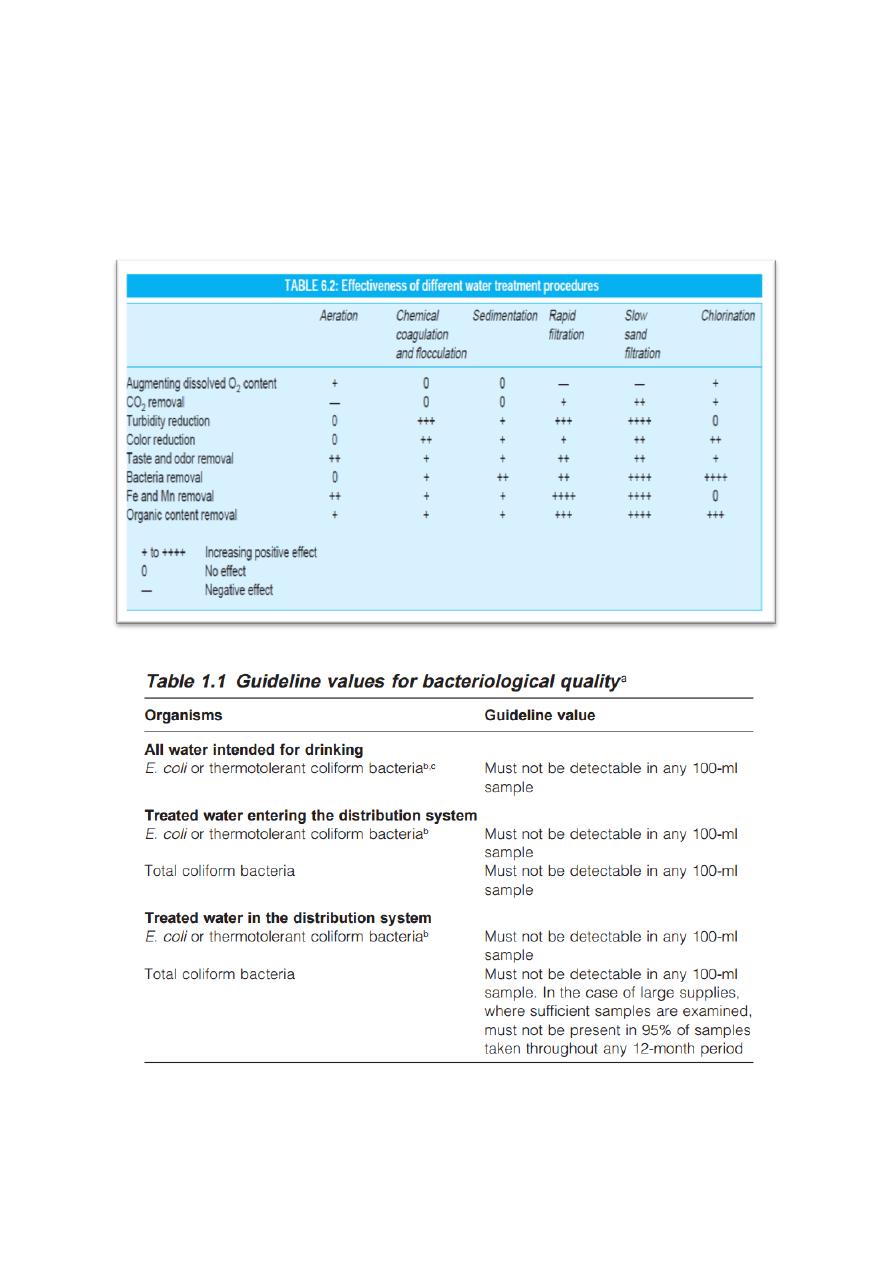
7
CHEMICALS:
J Bleaching powder
J Chlorine tablets:
J Iodine:
J Potassium permanganate:
J Alum:
